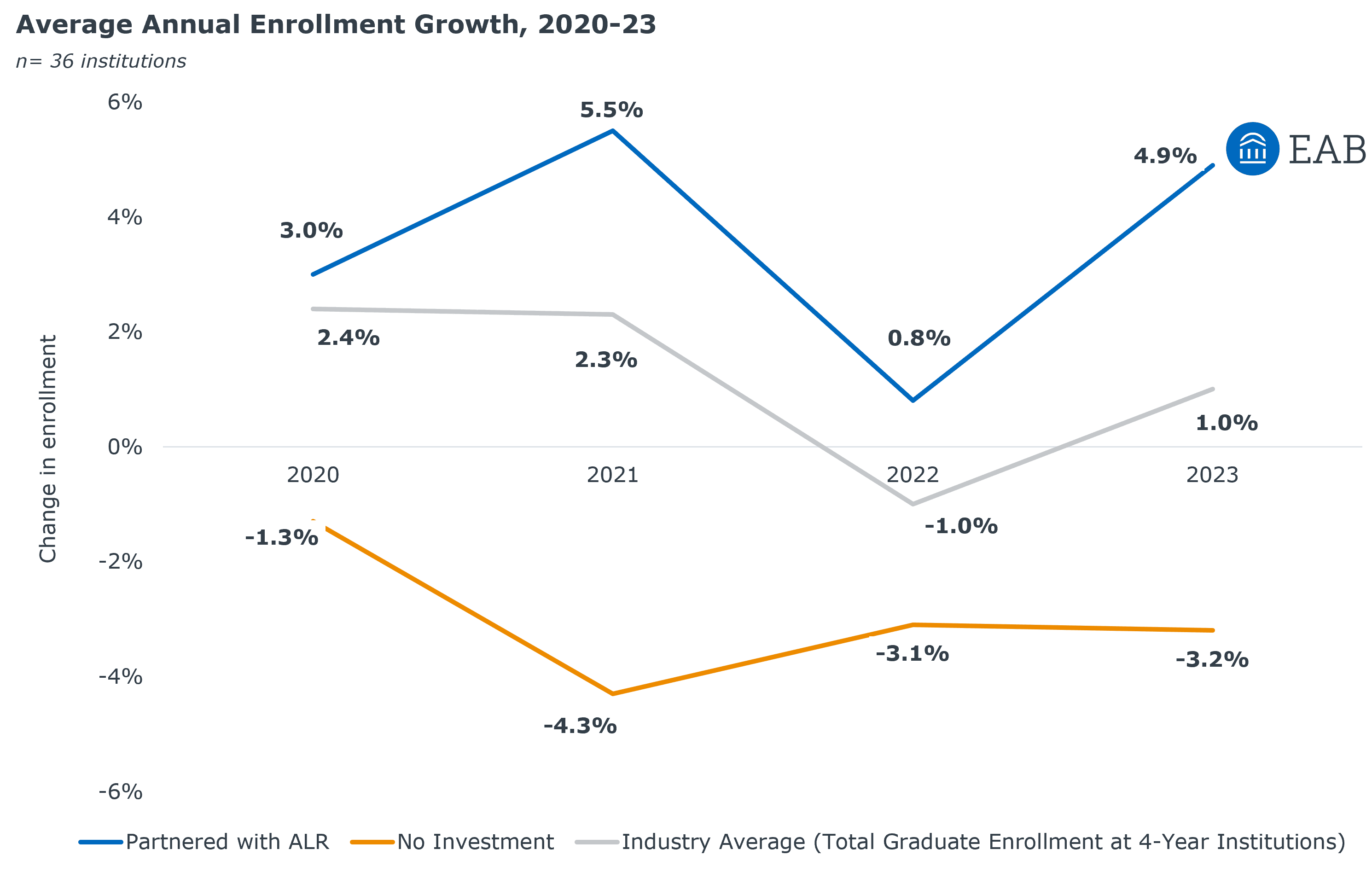3 strategic actions to support graduate enrollment in today’s policy landscape
Making informed decisions in today’s fluid federal policy landscape is critical—and it’s one of the reasons we’ve created an open access Federal Policy Navigation Suite to support institutional leaders. For those responsible for graduate enrollment, especially at institutions that enroll a meaningful proportion of international students and/or receive federal grant funding, recent executive orders and agency directives have made FY26 planning particularly challenging.
Here are some of the changes—and challenges—we’re facing, along with recommendations to position your institution for success amid the upheaval.
Federal policy changes impacting graduate enrollment
1. Isolationist policies, including reintroduction of travel bans: The second Trump administration term has ushered in a wave of isolationism including significant changes to federal immigration policy, intensifying its hardline approach. Leaders at institutions with high international enrollments are feeling the pressure of these policies most acutely with the reintroduction of travel bans topping the list of concerns. Many expected to see the reintroduction of travel bans from the first Trump administration on Trump’s first day back in office. That did not occur. Instead, cabinet members had been given 60 days to compile a list of countries with “deficient” screening, vetting, and information-sharing practices. This directive sets up the conditions for future travel bans that will likely be upheld in court.
Whether or not these bans take effect, the rhetoric alone has created a climate that will turn many international students away from US graduate programs. After strong surges in international enrollments in 2021-2023, hundreds of universities will be negatively impacted in the months to come. We’re already seeing students end their SEVIS (OPT) terms early, and there are early trends suggesting students from India are looking at alternative educational offerings in Europe and elsewhere (with significant declines in the past year), which may further impinge international enrollments.
2. Potential changes to H1-B Visas and “OPT”: There has been much recent debate over the future of the H1-B program. Some members of the administration want to end the program entirely in favor of protecting jobs for Americans. Others are in favor of the program and see it as vital for securing top talent in high-demand fields. The first Trump administration attempted to dramatically raise wage requirements for the program, but that effort was struck down by the courts. While next steps are unclear, this issue will likely resurface over the coming months, and changes could have huge implications for higher education enrollment, research programs, and staffing. And while there has not yet been a policy revision, the uncertainty surrounding immigration may see international prospective students look to friendlier environments (Canada, UK, Australia, Europe) with an open disposition to foreigners.
Discussion Guide: Immigration and International Enrollment
3. Tightening of research funding streams: The Trump administration’s second term has also ushered in turmoil for higher education research enterprises. Key measures include the mass funding freeze (since rescinded), the National Institutes of Health’s (NIH) proposed cap on Facilities and Administrative (F&A) costs (currently paused via TRO), stricter vetting processes for visa applicants, and the expansion of interior immigration enforcement. This may force institutions to pause funding for new projects and focus on their “core”—teaching and learning—and may lead to prospective PhD candidates to look to professional and non-research programs or opportunities outside the US.
Explore How Recent Legislation Will Affect Research Funding
Of course, these are just some of the federal policy changes that will impact graduate enrollment. We’ll continue to update our Federal Policy Navigation Suite with the latest.
Creating conditions for graduate enrollment stability and future growth
The anxiety at institutions across the country is (understandably) high. Higher ed faces fundamental challenges to our mission and our people. But as my teammate Khadish Franklin reiterated recently, allowing anxiety to dominate the conversation can lead to decision paralysis and prevent colleges and universities from advancing their own strategic priorities. Here are three strategies to support graduate enrollment amid this turbulence:
1. Conduct scenario planning: Anticipate the impact of research funding cuts, future travel bans, and changes to H1-B visas on the research enterprise and international enrollment through tabletop scenario planning. Institutions with a significant number of students and faculty from countries affected by previous travel bans and those likely to be deemed “high risk” should consider modeling the effect of future bans on enrollment, staffing, research, and collaborative programs and to seek alternative revenue drivers that are near strategic adjacencies.
2. Reprioritize domestic enrollment growth: Create enrollment stability by adapting your recruitment strategies to grow domestic student enrollment. This is, of course, easier said than done. Growing domestic enrollments starts by quantifying the leads needed to fill a potential gap in international enrollment. From there, building a strong and diversified top-of-the-funnel lead acquisition and conversion engine are critical elements for establishing a high performing domestic applicant pipeline.
3. Consider the costs of inaction: With looming budget cuts and financial uncertainty, it’s tempting to take a “wait and see” approach to enrollment investment. But I’m reminded of that old Winston Churchill adage “Never let a good crisis go to waste.” And enrollment history shows us that institutions that act in times of crisis see far better outcomes.
While today’s uncertainty is different from the COVID-19 crisis, it shares some interesting parallels: sudden, overnight disruption and a collective moment of reckoning. Our Adult Learner Recruitment team analyzed how institutions who took action during the last crisis fared relative to those who took a wait and see (or not invest at all) approach.
As the chart below shows, the institutions that issued an RFP for graduate recruitment support and chose EAB went on to experience an annual graduate enrollment growth as high as 5.5% from 2020 to 2023. By contrast, the institutions that declined to invest (issuing and then canceling an RFP in 2020 and/or 2021) went on to face declines as steep as -4.3% in 2022. Many of those schools struggled to recover, while EAB partners outpaced the industry average by 2.4% year over year.

Today, with growing threats to federal funding and uncertain state support, strategic investment in enrollment drivers will help determine which institutions succeed despite. Consider our team a resource for insight and recommendations as weather this storm together.
Ready to learn more?
Let's boost your graduate and adult learner enrollment together.

More Blogs

AI visibility is critical when competing for student enrollments

4 predictions for 2026: What’s next for graduate and online enrollment
